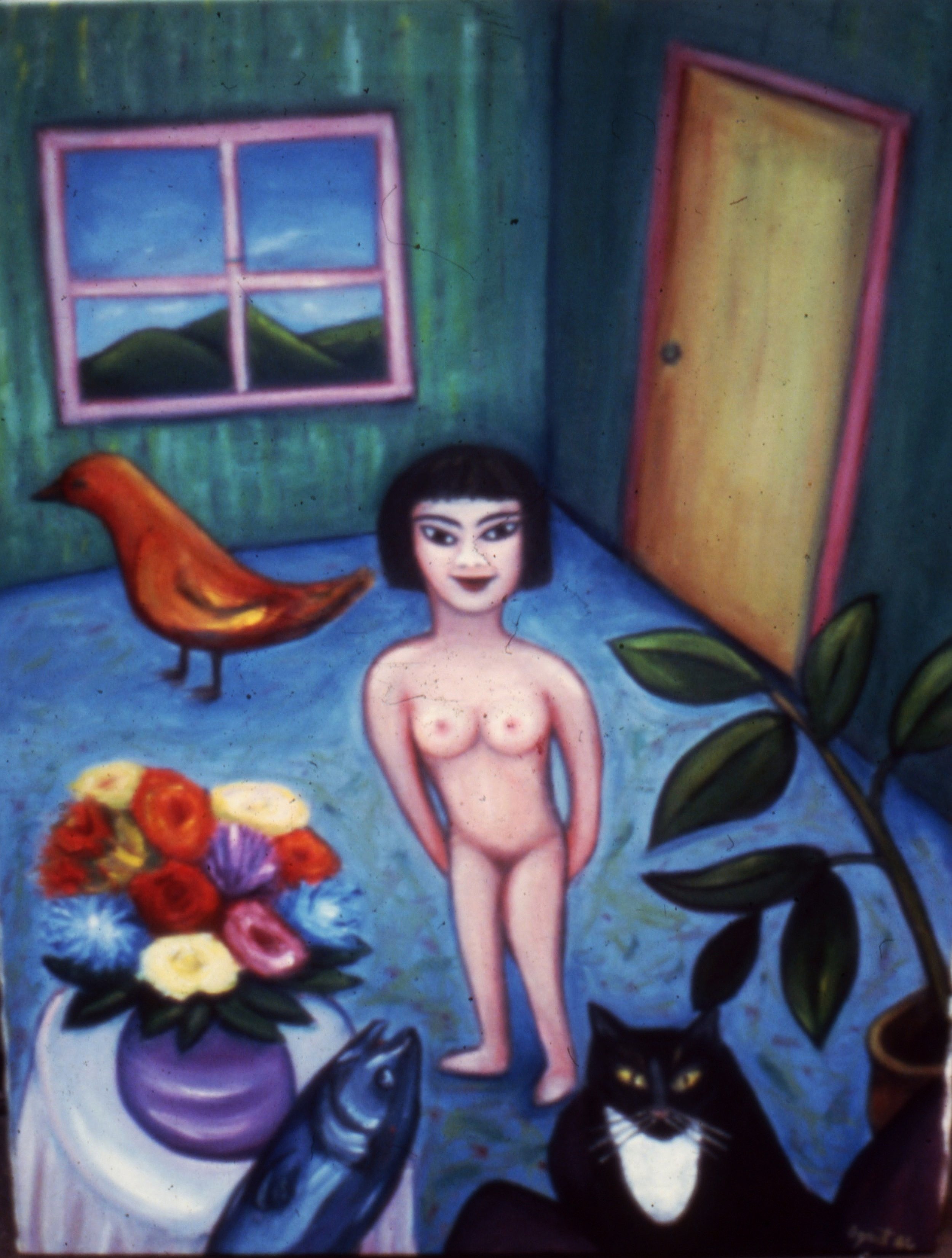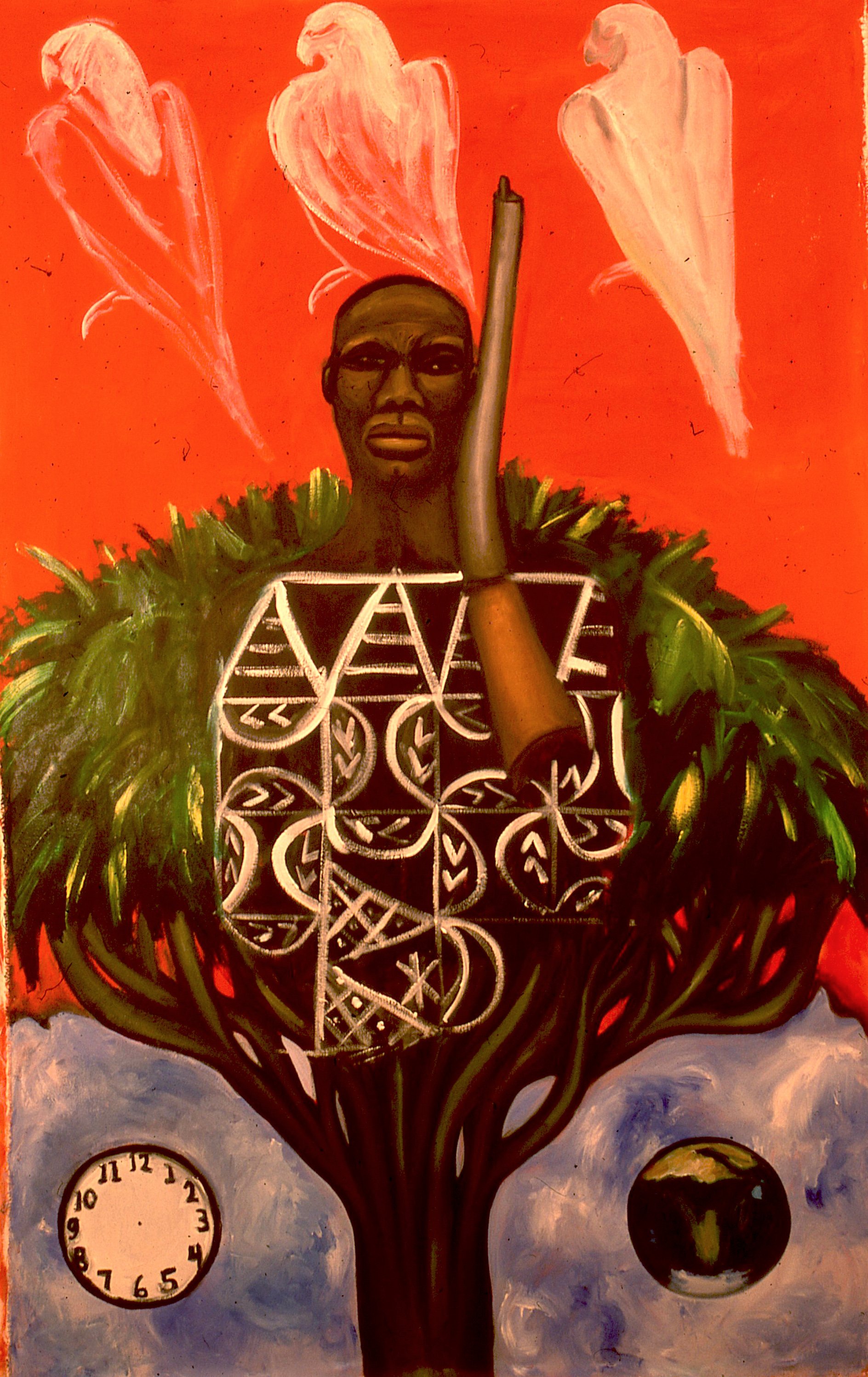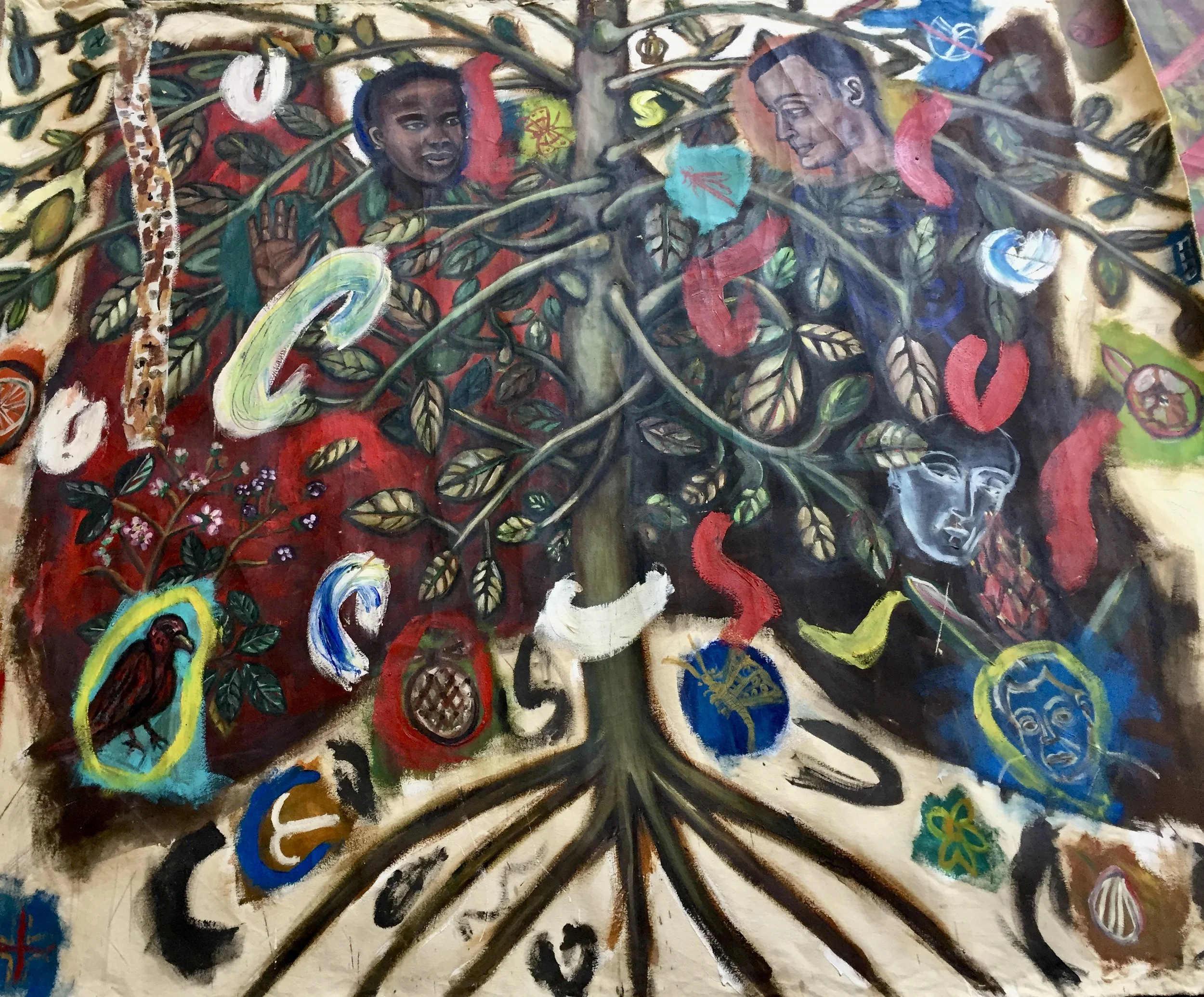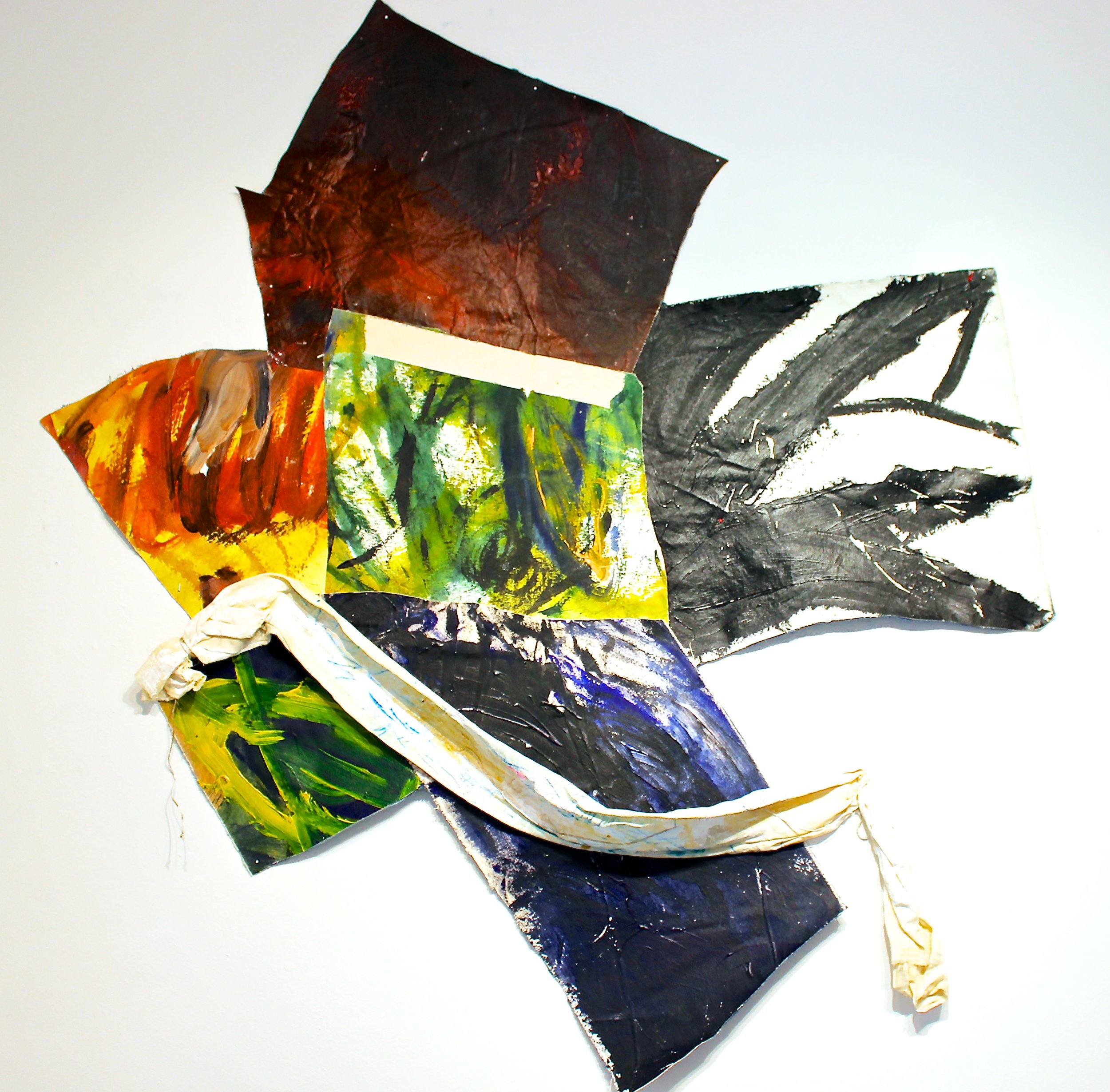PAINTING
The Two Queens—Yemaya and Elizabeth I 1997 I Acrylic on canvas I 121.9 × 142.2 cm.
“I have always guided my research in Dominican popular religious practices, I constantly visit bateyes, spaces where workers in the sugar cane field continue to reinforce traditions that intersect the Taíne, African and Creole ancestry, such as Gagá, a ritual that taught me how from simple resources I could transform an art room through installation with colors, sounds and images. I attach great importance to the aesthetic and spiritual dynamics of the Gagá festival, where together we build a spiritual feast where we dance the depths of our spirits and where human life is transformed into a constant and sovereign living space. The Gagá is an elaborate aesthetic search linked to the postcolonial approach of the performing arts such as theatre, music and dance, and merging with these individual biographical aspects, life, biographies and subjectivities taken by the breaking of memories that means the displacement, migration and criticism of hegemonic identities. Corporeity in Gagá plays a central role. There is no petition, prayer or mantra without a body of execution, available to celebrate the spirituality of the living; the holiness of the living. The altar can be trees, seas, mountains, too. The more bodies they have, the greater the power of peace. The greater their contribution to the community, based on an idea of cultural communion.
I have lived in different periods in countries where the presence of Afro descendants is practically zero and those migration processes have been important in my life and work as long as they have allowed me to reflect on questions such as transnational identity, borders, cultural differences, but above all to educate. When I moved to New Zealand in 1982, for example, I generated a lot of attention in the local environment for my work "Mami Watta," a deity known as "Santa Marta la Dominadora," which gives material goods, personal power and beauty, which achieves impossible loves. That's when I realized I was irrevocably linked to my ancestors. She is the most popular among Dominican women and sex workers of all of the spirits of the Dominican voodoo pantheon, the wife of San Elías, the Baron of the Cemetery. I met her in the fire of the fearful Petro spirits of Batey La Ceja, in the midst of Gagá rituals.
In Miami, I don’t live where Dominicans live, but my studio and gallery is in Allapattah, which is the “Dominican” neighborhood in Miami. But, I don’t know many people living there. I am such a hybrid-Dominican that I don’t fit many of the usual molds. Not even with my family. I work with some of the Haitians artists here and when I want to be really close to home I eat Haitian food (because I think it is more like the food we eat back home). I love Little Haiti, to me that feels more like home. The Haitian community here is older and more established. You go to Little Haiti and you will see chickens running around and, sometimes even small pigs. You will go to a garden restaurant and there will be roosters singing and running around after a hen. Dominicans are harder to find, but there are places where you can meet them. If you go to Little Haiti you can run into a Gagá dancing in the streets and just join them. This is not tourist stuff, it is real. But with all of that said, Miami is a very Caribbean city. The wonder of this city is that you not only get Dominicans, you get everyone else, Central Americans, the Venezuelans, Cubans, Puerto Ricans, Haitians, all of South American and Mexicans. This city is very trilingual and it’s like living in the Caribbean but things work. Like the electricity doesn’t go out, nor the water. I am a beach rat, I live close to the ocean, so I go to the beach almost daily if I can and the weather permits it. This is the ultimate Caribbean, my being able to have that communion with the water and the white sand. It’s very healing. “ says Oquet










































